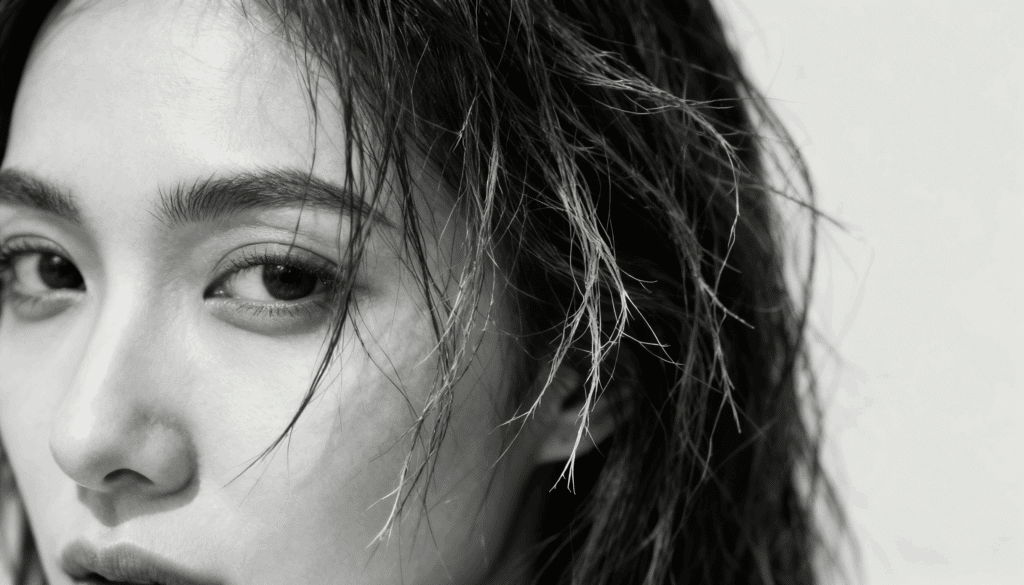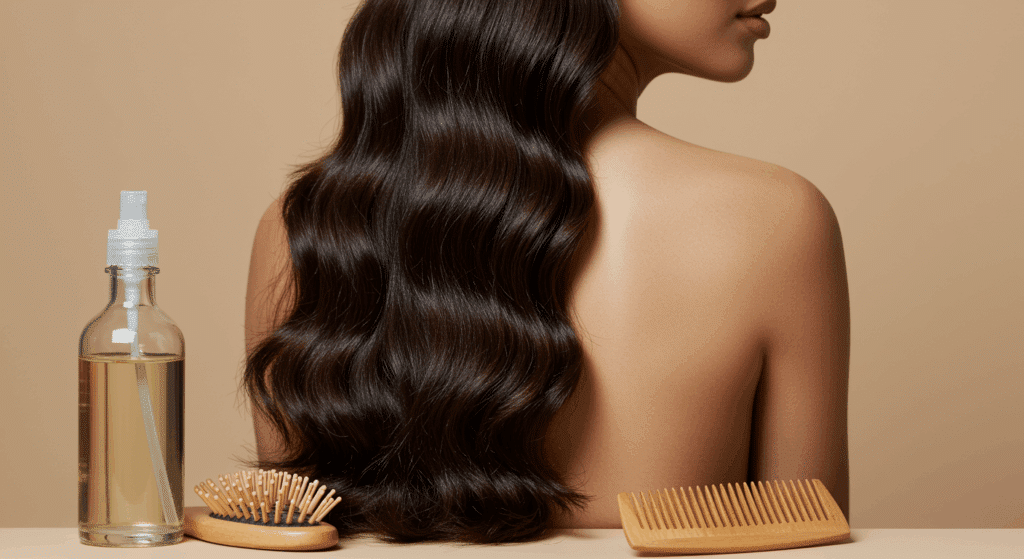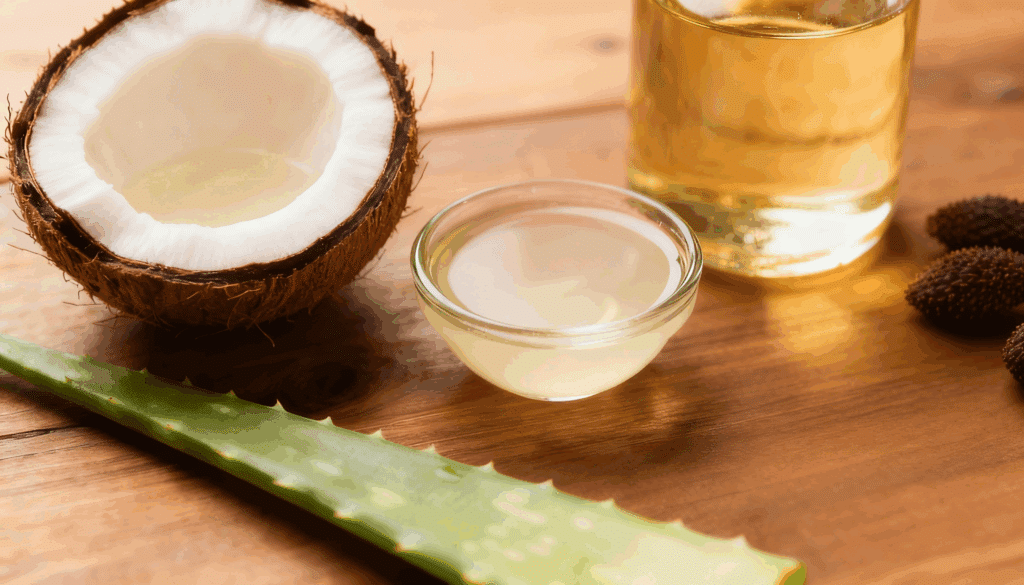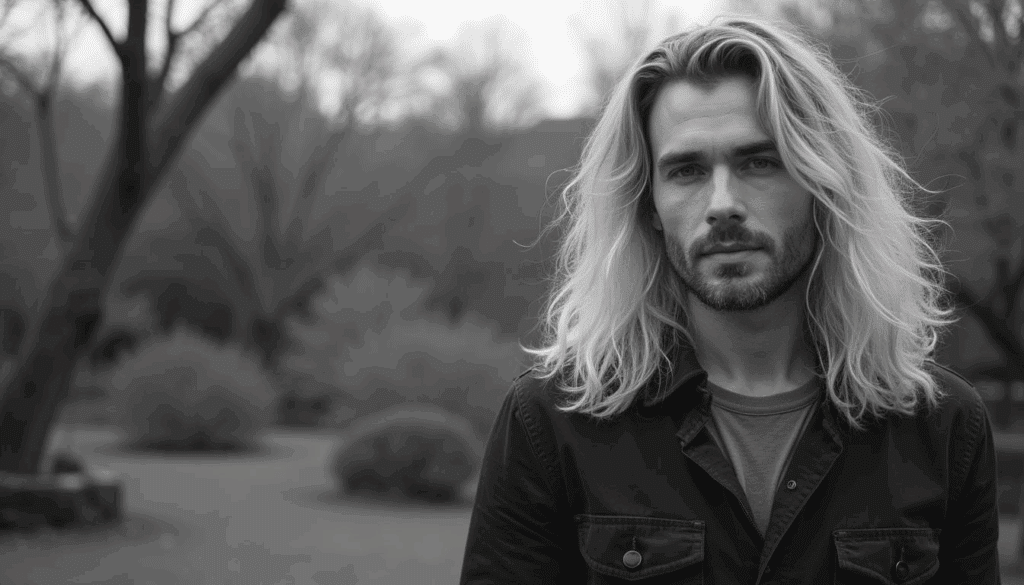Most people think hair transplant recovery takes forever. They worry about long downtimes and months of looking different.
But the process follows predictable stages, and knowing what to expect makes the whole experience less stressful.
This blog explains exactly when scabs fall off, when redness fades, and when new hair starts growing.
It covers both FUT and FUE techniques. You will learn about each stage and understand which activities to avoid and when they can resume normal routines.
Read on to get the complete recovery timeline.
Hair Transplant Recovery Time (FUT Technique)
The FUT (Follicular Unit Transplantation) technique involves removing a strip of scalp from the donor area.
This method has a specific recovery timeline that differs slightly from other techniques.
Day 1: Immediate Post-Surgery Care
The first day requires complete rest at home. Patients experience tightness around the donor area where the strip was removed.
Pain medication manages discomfort effectively. A bandage covers the back of the head securely. Mild swelling may start appearing around the forehead.
Avoid lying flat and keep the head elevated always. Follow all post-operative instructions carefully.
Days 2-7: Initial Healing Period
The bandage gets removed after one or two days. The donor area feels tight and uncomfortable when moving.
Small scabs form over the transplanted recipient sites. Stitches or staples remain in place at the back. Swelling peaks around day three, then gradually decreases.
Gentle hair washing begins on day three or four. Most people feel well enough for light activities.
Days 8-14: Stitch Removal Phase
Stitches or staples get removed during this timeframe, typically. The removal process takes just a few minutes. Some discomfort occurs, but nothing severe or unbearable.
The donor area shows a linear scar that’s still red. Scabs on the recipient area start falling off naturally.
Many patients return to work during this period. The scalp looks much better overall.
Weeks 3-4: Shock Loss Begins
Transplanted hairs fall out during this phase temporarily. This is normal with FUT. The follicles remain safely embedded under the scalp.
They’re simply entering a resting phase before regrowth. The donor scar continues healing and fading gradually.
Numbness around the scar area is common temporarily. All normal activities can resume by now.
Months 2-6: Early Regrowth Stage
New hair starts growing from the transplanted follicles. Growth appears thin and fine at first. The donor scar becomes less noticeable and lighter.
About 30-40% of the final results show during this time. Hair thickness improves gradually with each passing week.
The scalp feels completely normal to touch. Patients notice a visible improvement in their appearance.
Months 7-12: Final Results Appear
Hair reaches full density and thickness during this period. The transplanted area looks natural and well-blended.
The donor scar fades to a thin white line. Most people feel extremely satisfied with their transformation. Hair can be cut and styled normally.
The FUT procedure shows its complete results. Long hair easily covers any remaining scar.
Hair Transplant Recovery Time (FUE Technique)
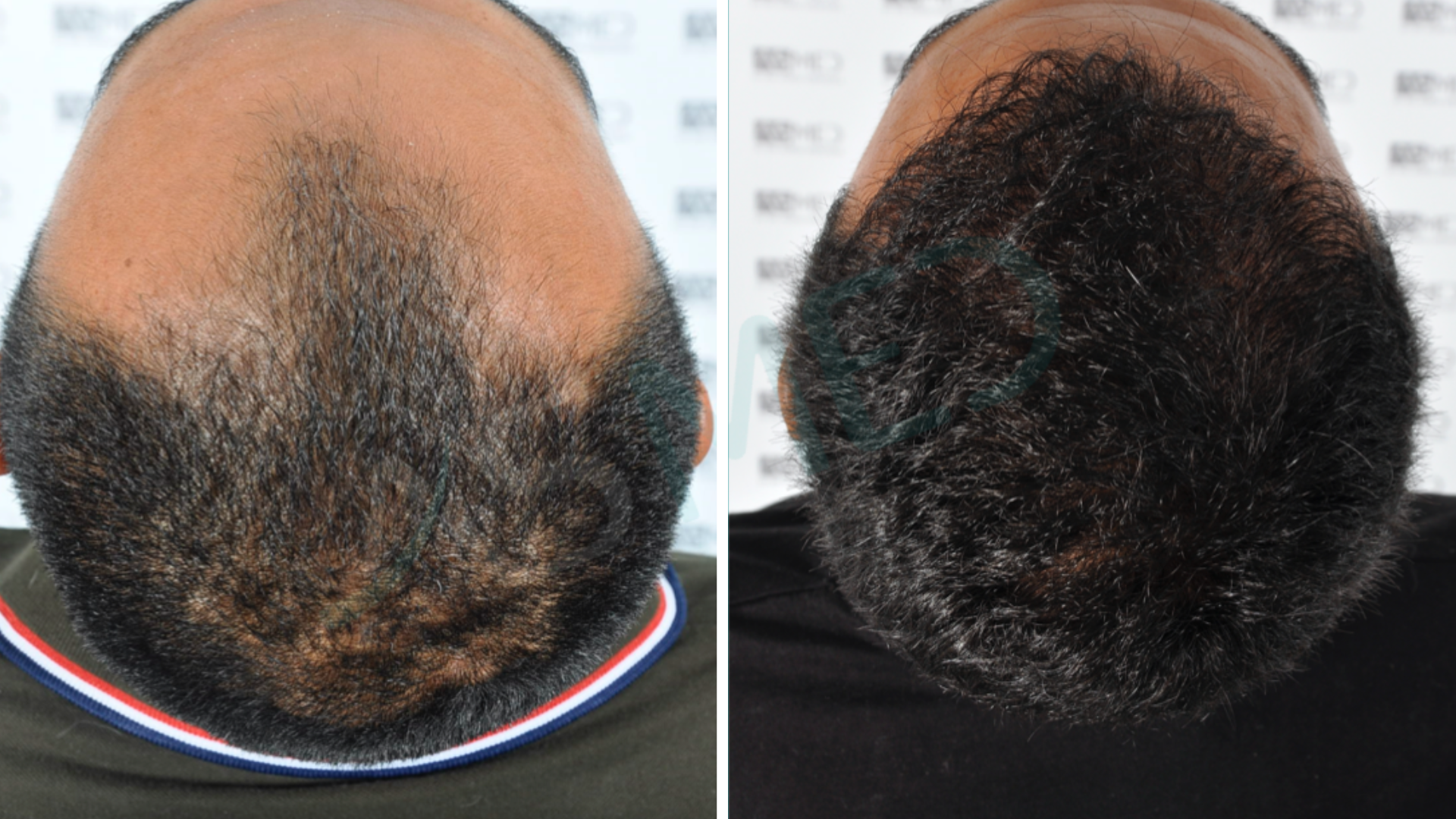
The FUE (Follicular Unit Extraction) technique extracts individual hair follicles directly from the donor area.
This method leaves tiny dot scars instead of a linear scar.
Day 1: Post-Procedure Recovery Begins
The first day involves minimal discomfort compared to FUT. Patients experience tiny pinpoint sensations across the donor area.
No stitches or staples are needed with this technique. Small scabs form at each extraction point naturally. The recipient area also develops scabs over transplanted follicles.
Rest at home with the head elevated properly. Pain medication helps manage any minor discomfort effectively.
Days 2-7: Fast Initial Healing
Recovery progresses faster than FUT during this phase. The donor area heals quickly without any stitches. Tiny red dots appear where follicles were extracted.
Gentle washing begins on day two or three. Scabs start forming on both donor and recipient areas. Swelling peaks around day three, then subsides rapidly.
Most people feel comfortable returning to work sooner.
Days 8-14: Scabs Fall Off Naturally
Scabs on the donor area disappear within two weeks. The recipient area scabs take slightly longer to heal. No stitch removal appointment is needed with FUE.
The scalp looks significantly better during this timeframe. Redness fades away gradually each day that passes.
Light exercise can resume after ten days safely. The donor area becomes barely noticeable to others.
Weeks 3-4: Temporary Hair Shedding
Transplanted hairs begin falling out during this period. This shock loss is normal and temporary, always. The follicles remain intact beneath the scalp surface.
They enter a resting phase before new growth. The donor area shows minimal scarring compared to FUT. Small dots fade to match the surrounding skin tone.
Normal activities continue without any restrictions now.
Months 2-6: New Growth Emerges
Hair starts regrowing from the transplanted follicles steadily. Growth appears fine and thin initially, but it strengthens.
The donor area scars become virtually invisible over time. About 40-50% of the final results show during this stage. Hair thickness and density improve with each week.
The scalp feels completely normal and healthy. Patients notice encouraging changes in their appearance.
Months 7-12: Complete Transformation Shows
Full hair density becomes apparent during this final phase. The transplanted area blends naturally with existing hair.
Donor area scars remain nearly invisible, even close up. Hair grows thick, strong, and healthy throughout. Most patients achieve their desired results by month twelve.
The FUE method shows excellent natural-looking outcomes. Hair can be styled any way without concerns.
Is the Hair Transplant Recovery Process Painful?
Most patients report minimal pain during recovery. The procedure itself uses local anesthesia, so no pain occurs during surgery.
Afterward, the scalp feels tender and tight for a few days. Doctors prescribe pain medication to manage any discomfort effectively.
Many people describe the sensation as similar to mild sunburn. The donor area may feel sore when touched.
However, over-the-counter pain relievers usually provide sufficient relief. By day five, most discomfort disappears completely.
Patients can return to their normal routines without experiencing significant pain or requiring strong medications.
Things to Avoid After a Hair Transplant
Recovery success depends heavily on what patients avoid during healing. Certain activities and habits can damage the transplanted follicles or slow down recovery.
Here are critical things to stay away from after a hair transplant.
- Touching or Scratching the Scalp: Keep your hands away from the treated area. Touching introduces bacteria. Scratching dislodges grafts permanently. Use prescribed medication for itching.
- Wearing Tight Hats or Helmets: Pressure damages newly transplanted follicles. Tight headwear rubs against grafts. Wear loose hats only if necessary. Avoid helmets for two weeks.
- Drinking Alcohol: Alcohol thins the blood and increases bleeding. It slows natural healing processes. Wait at least one week before drinking. Some doctors recommend longer.
- Smoking Cigarettes: Nicotine restricts blood flow to the scalp. Poor circulation affects graft survival. Quit smoking for several weeks. Use this as a quitting opportunity.
- Heavy Exercise and Sports: Strenuous activities raise blood pressure quickly. This causes bleeding at transplant sites. Avoid gym workouts for two weeks. Light walking is acceptable.
- Direct Sun Exposure: UV rays damage transplanted follicles permanently. The scalp becomes extremely sensitive. Wear a loose hat when outside. Stay indoors during peak hours.
Nutrition to Fasten Hair Transplant Healing
The body needs specific vitamins and minerals to heal effectively and promote healthy hair growth.
| Nutrition | Benefits for Recovery | Food Sources |
|---|---|---|
| Protein | Builds and repairs tissue. Strengthens hair follicles. Promotes faster wound healing. | Chicken, fish, eggs, beans, lentils, Greek yogurt, tofu |
| Biotin (Vitamin B7) | Strengthens hair structure naturally. Supports keratin production effectively. Promotes healthy growth. | Eggs, nuts, sweet potatoes, salmon, mushrooms, bananas |
| Iron | Carries oxygen to follicles. Prevents hair loss effectively. Supports healthy blood flow. | Red meat, spinach, lentils, quinoa, fortified cereals |
| Zinc | Repairs damaged tissue quickly. Supports immune system function. Promotes cell growth. | Oysters, beef, pumpkin seeds, chickpeas, cashews |
| Omega-3 Fatty Acids | Reduces inflammation in the scalp. Nourishes hair follicles deeply. Improves hair density. | Salmon, mackerel, walnuts, flaxseeds, chia seeds |
| Vitamin A | Produces sebum for the scalp. Keeps hair moisturized naturally. Supports cell growth. | Carrots, sweet potatoes, spinach, kale, mangoes |
Red Flags to Notice
Monitoring recovery helps catch problems early before they worsen. Most healing progresses smoothly, but certain signs require immediate medical attention from the surgeon.
Excessive bleeding that doesn’t stop after applying gentle pressure needs evaluation. Severe pain that pain medication can’t control indicates potential complications.
Foul-smelling discharge or pus from the treated area suggests infection. Extreme swelling that spreads beyond the forehead requires assessment.
A high fever above 101°F means the body is fighting an infection. Large areas of redness that increase daily show inflammation.
Contact the surgeon immediately if any of these symptoms appear during recovery.
To Wrap Up
The hair transplant recovery time varies slightly from person to person, but the general pattern remains consistent.
Watch for warning signs that need medical attention. Contact the surgeon immediately if something feels wrong or unusual. Don’t hesitate to ask questions during follow-up appointments.
With proper care and realistic expectations, anyone can achieve excellent results.







